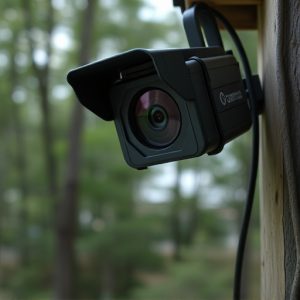Advanced Nighttime Glint Detection for Top Best Indoor Spy Camera Systems
Camera lens glint, or glare, degrades indoor surveillance quality, especially in low light. It'…….
Camera lens glint, or glare, degrades indoor surveillance quality, especially in low light. It's caused by bright light reflecting off surfaces into the camera lens. Detecting and reducing glints is crucial for clear, discreet surveillance using the Best Indoor Spy Camera System. Advanced algorithms leverage computer vision and machine learning to identify glints in busy environments. Implementing best practices like high sensitivity, elevated angles, cleaning, and intelligent image processing ensures glint-free footage with the Best Indoor Spy Camera System.
Uncover the secrets behind enhancing night-time surveillance with advanced camera lens glint detection methods. This comprehensive guide explores the challenges of capturing clear images in low-light conditions, particularly from indoor spy camera systems. We delve into innovative techniques to overcome glint issues, ensuring optimal performance. From understanding fundamental principles to implementing best practices, this article equips you with the knowledge to choose and set up the best indoor spy camera system, delivering crystal-clear surveillance around the clock.
- Understanding Camera Lens Glint: The Basics
- Challenges in Night-Time Glint Detection
- Advanced Techniques for Indoor Spy Camera System
- Implementing the Best Practices for Glint-Free Surveillance
Understanding Camera Lens Glint: The Basics
Camera lens glint, also known as glare or reflection, is a common issue that can affect image quality, particularly in low-light conditions. It occurs when light reflects off a bright surface and into the camera lens, creating a disturbing sparkle or mirror-like effect in the photograph or video. This phenomenon can be especially problematic for those utilizing the best indoor spy camera system, as it may obscure details and make surveillance difficult.
In simple terms, lens glint happens when light sources, such as bright lights, windows, or reflective surfaces nearby, outshine the subject being captured by the camera. The intense light then bounces off the camera lens, leading to a loss of contrast and potentially revealing sensitive information that should remain hidden. Understanding this basic principle is key to developing effective methods for glint detection and reduction, ensuring clear and discreet surveillance with your indoor spy camera system.
Challenges in Night-Time Glint Detection
Detecting glints in low-light conditions presents unique challenges for camera systems, especially in indoor settings where lighting is often inconsistent and variable. One of the primary difficulties is distinguishing between genuine glints from reflective surfaces and noise or artifacts created by the camera sensor itself. In a busy indoor environment with multiple sources of light, such as lamps, screens, and even body reflections, identifying true glints can be akin to spotting a needle in a haystack.
Furthermore, the performance of night-time glint detection is heavily influenced by factors like camera sensitivity, exposure settings, and image processing algorithms. With limited light available, adjusting these parameters becomes critical; over-exposure may highlight noise, while under-exposure could render glints invisible. The quest for an effective indoor spy camera system therefore involves a delicate balance between capturing enough detail in dark conditions and minimizing false positives due to reflective surfaces.
Advanced Techniques for Indoor Spy Camera System
In the quest for an advanced and reliable indoor spy camera system, cutting-edge techniques play a pivotal role in enhancing security measures. One such innovation is the implementation of sophisticated glint detection algorithms, specifically designed to identify lens glints in low-light conditions. These algorithms leverage computer vision and machine learning to analyze video feeds, pinpointing the subtle reflections that often indicate the presence of hidden cameras. By integrating this technology, users can transform their indoor spaces into secure environments, ensuring privacy and peace of mind.
The Best Indoor Spy Camera System should not only offer superior image quality in dimly lit settings but also employ advanced detection methods to uncover clandestine devices. This involves sophisticated signal processing techniques to isolate and identify the unique optical signatures left by spy cameras. With continuous advancements in artificial intelligence, these systems become increasingly adept at learning and adapting to new environments, making them indispensable tools for maintaining a safe and secure indoor atmosphere.
Implementing the Best Practices for Glint-Free Surveillance
Implementing effective glint detection methods is pivotal for achieving clear and reliable surveillance footage, especially in low-light conditions. To ensure the best indoor spy camera system, several best practices should be adopted. Firstly, utilize high-sensitivity cameras designed for night vision, equipped with advanced image stabilization to minimize any blur caused by movement or vibrations. These cameras employ infrared technology to capture detailed images even in complete darkness.
Additionally, strategic positioning is key; mount cameras at elevated angles to reduce the reflection of nearby lights, ensuring they capture clear views without interference from glints. Customizable lens settings allow fine-tuning for minimal glare, and regular cleaning maintains optimal performance. Advanced image processing algorithms further enhance visibility by intelligently reducing unwanted reflections, ultimately delivering crisp, glint-free surveillance footage.
In conclusion, detecting camera lens glint in night-time conditions remains a significant challenge but can be effectively addressed using advanced techniques tailored for indoor surveillance environments. By understanding the basics of lens glint and adopting best practices, such as implementing sophisticated algorithms and utilizing high-quality sensors, the Best Indoor Spy Camera System can significantly enhance security measures while minimizing false positives. Continuously refining these methods is crucial to stay ahead in the fight against covert surveillance threats.


